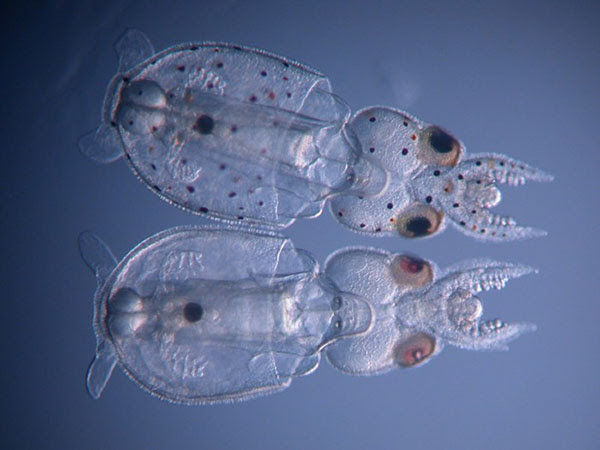
A longfin inshore squid hatchling treated with CRISPR gene editing lacks the spots of its untreated companion. (K. Crawford et al./Curr. Biol.)
First gene-edited squid is clear as glass
Marine biologists have used the DNA-editing tool CRISPR to genetically alter a squid for the first time. The achievement is a technical feat because cephalopod embryos have a protective outer layer that makes them tricky to work with. The team developed a pair of microscissors that cut a small hole big enough to accomodate a specially made needle. Once the needle was inside, the scientists used CRISPR to snip out a gene linked to the squid’s skin, making the animal translucent. Cephalopods have large brains, complex behaviours and neurons that directly control the changing patterns on their skin, making them a promising model organism for studying brain evolution and neural function.
OneZero | 6 min readReference: Current Biology paper






















.png)











No hay comentarios:
Publicar un comentario